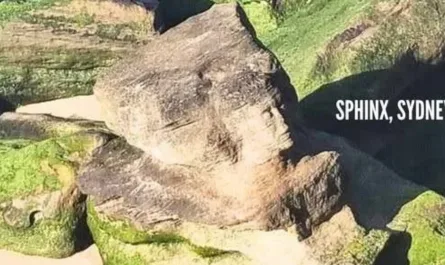Hey there, history buffs and mystery seekers! Today, I’m diving into one of Egypt’s lesser-known gems—the Solar Temple of Abu Gurab—and the wild idea that it might be an ancient “stargate.” Yep, you heard that right: a portal to the stars, right in the desert near the Giza pyramids. But is there any truth to this cosmic claim, or is it just a captivating story? Let’s explore the facts, the finds, and the fringe theories that make this site so intriguing.

What Is the Solar Temple of Abu Gurab?
Tucked about 15 kilometers from the iconic Giza pyramids, the Abu Gurab site is part of the Abusir pyramid complex, dating back to Egypt’s Fifth Dynasty (around 2500 BCE). These temples, especially those built by pharaohs Nyuserre Ini and Userkaf, were dedicated to Ra, the sun god who ruled the ancient Egyptian cosmos. Picture this: massive limestone structures, towering obelisks, and shimmering alabaster altars, all designed to honor the sun’s divine power. The craftsmanship is stunning—red granite, fine limestone, and polished alabaster create a scene that feels almost otherworldly.
The layout is fascinating. At the heart of Nyuserre’s temple, there’s a huge open courtyard with an alabaster altar, surrounded by reliefs depicting Ra’s journey across the sky. The obelisk, a symbol of Ra’s resting place, looms large, tying the temple to the heavens. It’s no wonder people look at this place and start dreaming up cosmic connections!

The Stargate Theory: Fact or Fiction?
Now, here’s where things get juicy. Some alternative historians, like Abdel Hakim Awyan and Dr. Stephen Mehler, have proposed that Abu Gurab’s temples weren’t just for worship—they might have been interdimensional portals, or “stargates.” According to Mehler’s book Land of Osiris, local legends speak of “Neters”—sacred energy beings or extraterrestrials—who “landed” at Abu Gurab. The theory goes that the temples’ alabaster structures, with their supposed harmonic resonance, could amplify spiritual energy, letting priests or initiates connect with these cosmic entities.
The idea’s got a certain sci-fi charm, doesn’t it? Imagine ancient Egyptians standing on those alabaster basins, chanting or meditating, their minds tuning into some galactic frequency. Online forums like Reddit and sites like ancient-code.com love this stuff, drawing parallels to other “stargate” sites worldwide. They point to the precise engineering and the temples’ alignment with celestial events as hints of advanced, maybe even alien, knowledge.
But let’s pump the brakes. As cool as it sounds, there’s no hard evidence—no ancient UFO blueprints or interdimensional travel logs—to back this up. The harmonic resonance idea is speculative, and while alabaster’s smooth, reflective quality is striking, it’s a leap to call it a portal. Most Egyptologists see these temples as centers of solar worship, tied to the pharaohs’ divine status, not extraterrestrial tech.

Recent Discoveries Shed New Light
Here’s where the story gets even more exciting: recent digs are uncovering new layers to Abu Gurab’s history. In 2022, archaeologists led by Dr. Massimiliano Nuzzolo found a 4,500-year-old sun temple beneath Nyuserre’s, built from mud bricks. This suggests the site was sacred even earlier than we thought. They unearthed beer jugs, seals with royal names, and other ritual items, painting a picture of a bustling religious hub. No stargates, but plenty of clues about Fifth Dynasty life.

The alabaster basins, often cited in stargate theories as blood-collection pools for rituals, are more likely symbolic altars for offerings. No tools or DNA evidence supports the blood idea—it’s more folklore than fact. The Polish Academy of Sciences has also been excavating, revealing more about the temples’ architecture and their role in royal ideology. It’s all about Ra, power, and the afterlife, not interdimensional travel.
Why the Stargate Idea Persists
So why does the stargate theory keep popping up? I think it’s because Abu Gurab feels magical. The precision of the stonework, the alignment with the sun, and the sheer age of the place spark our imagination. Add in pop culture’s love for ancient aliens and shows like Stargate SG-1, and it’s easy to see why people want to believe. Plus, the site’s relative obscurity compared to Giza makes it a perfect canvas for mystery.
For me, the real magic is in the history. The Solar Temple of Abu Gurab shows us how deeply the ancient Egyptians revered the sun, weaving it into their architecture, religion, and kingship. Whether it’s a stargate or not, it’s a window into a civilization that still captivates us 4,500 years later.

Want to Dig Deeper?
If you’re as hooked as I am, check out the Sun Temples Project or National Geographic’s Lost Treasures of Egypt for more on recent finds. And if you’re into the stargate angle, Dr. Mehler’s Land of Osiris is a fun, if speculative, read. What do you think—cosmic portal or ancient temple? Drop a comment below and let’s chat!
Until next time, keep exploring the mysteries of the past!


